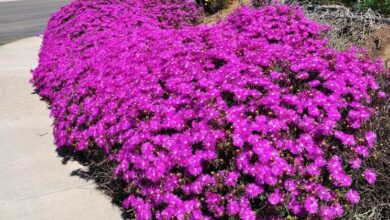Characteristics and care of Jasminum multipartitum

Many have been those who have surrendered to the charms of jasmine. From the ancient Egyptian dynasties, emperors of China to ancient Persia, the palaces were decorated by jasmine, both for their appearance, as well as for their pleasant fragrance and multiple uses.
Origin of Jasminum multipartitum

The Jasminum Multipartitum is a plant native to the tropical zone of Eurasia, finding a greater amount of diversity in Southwest Asia, apart from Africa. It became popular in Spain when the Moors introduced it in the 16th century. It was known to the rest of Europe in the 18th century and its importance to the French perfume industry was invaluable.
The plant has more than 200 species, all loaded with flowers with a pleasant smell. The name comes from the Latin word Jasminum and which in turn comes from the Persian yasmin. This species is from the Oleaceae family of plants and is known by the common name of starry wild jasmine.
Characteristics Jasminum multipartitum
Starry wild jasmine is a climbing plant that perfectly tolerates the sun or semi-shade. It has white, aromatic, star-shaped flowers that can attract a wide range of fauna to gardens. They especially attract hawk moths that carry out the function of pollinating the flower.
The multipartitum is a species of Jasmine whose habitat is Africa, especially the Cape Province KwaZulu-Natal and Johannesburg. It has white flowers that are waxy to the touch, with a soft sweet aroma that stand out in the plant with dark green leaves. The plant is a large evergreen, its rapid growth will result in a climber that can reach 3 meters. It is recommended to plant it rather as a shrub and that it does not exceed 150 centimeters in height.
The leaves are bright green making a spectacular setting for the flowers. The inflorescence is in the shape of a star that while they are buttons the color is pink or red, while the lobes of the flowers are pure white when they open. The largest flowers exceed 30 mm in width and their presence is noticeable on the plant during the spring and summer months.
The delicate and intense fragrance of the jasmine flower is subtle during the day and strong at night. The fruit of the multipartitum jasmine plant is a small berry that is black when ripe. The pulp is juicy and the flavor is similar to that of plum, it has a central seed
Cultivation and care

Planting this type of jasmine is relatively simple. Like all plants of this species, choosing the cutting option may be the right thing to do. Although if they decide on a sapling of the plant or sow a seed it will also evolve effectively. The right time to sow the cutting or sapling is in spring when you are sure that the temperatures will not drop too low.
An important aspect is to choose a suitable area to place the plant. This species supports direct radiation from the Sun, however it is female if it is in semi-shade. It is very important that the land has excellent drainage and, if possible, add an organic fertilizer monthly.
The soil should be prevented from drying out too much, so it should be watered twice a week in hot climates and less in winter. This plant is very beautiful even without flowers and grows quickly so pruning it is a must. This should be done once the plant no longer has flowers and is that despite the fact that it tolerates direct solar radiation, the Jasminum multipartitum prefers a partially shaded position, ideally being a well-drained and shaded corner of the garden.




